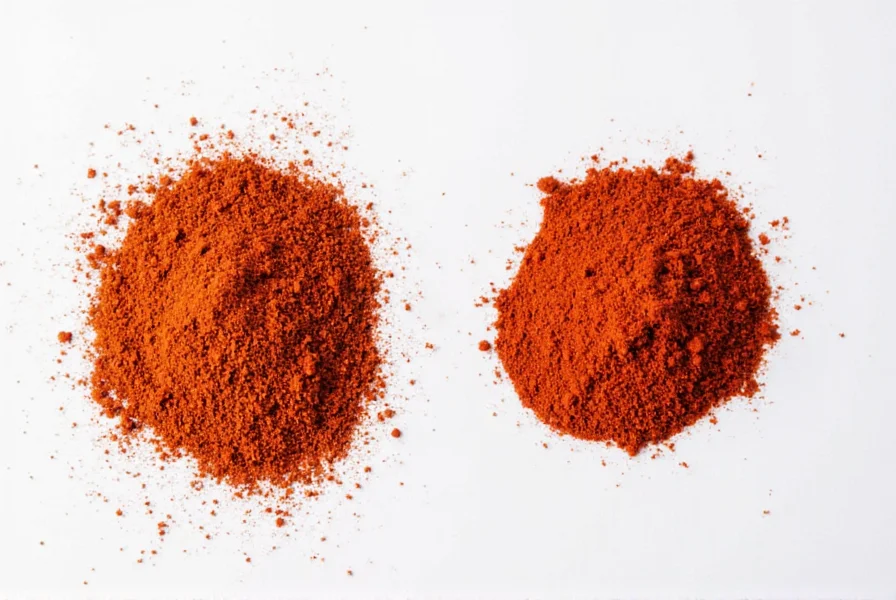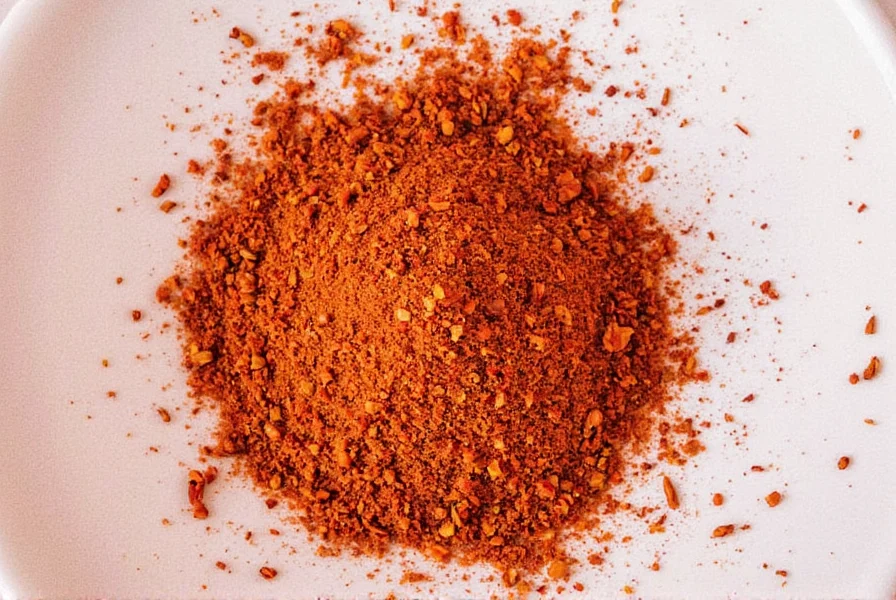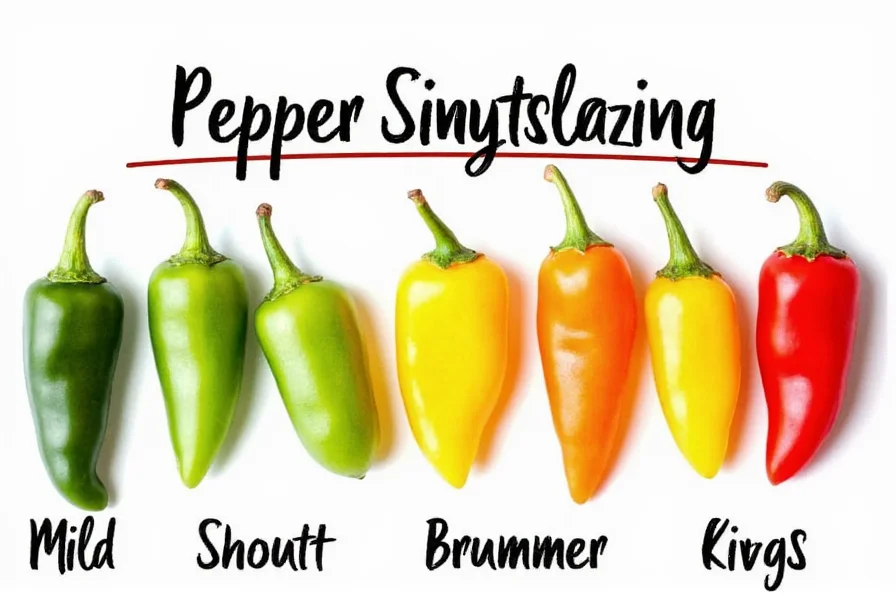Introduction: The Spice Dilemma
No, chili flakes and red pepper flakes are not the same thing. While both are dried, crushed peppers used to add heat to dishes, they differ significantly in heat level, flavor profile, and culinary applications. Red pepper flakes are typically made from cayenne peppers and offer a consistent moderate heat, whereas chili flakes can come from various pepper types, resulting in a wider range of heat and complex flavors. Let's break down the key differences to help you choose the right spice for your cooking needs.
What Are Chili Flakes?
Chili flakes are made from dried and crushed whole chili peppers. They can come from various types of chilies like cayenne, jalapeño, or even Thai bird's eye chilies.
- Texture: Coarse, flaky bits
- Flavor Profile: Smoky, earthy, sometimes fruity depending on the chili type
- Heat Level: Varies widely (from mild to super-hot)

The color can range from reddish-orange to deep maroon, and some may include seeds for extra heat. These flakes are commonly used in Italian cooking (like on pizza), Asian stir-fries, and Mexican dishes.
What Are Red Pepper Flakes?
Red pepper flakes are usually made from a blend of dried red chilies, most commonly cayenne or other medium-heat varieties. They tend to be more uniform in size and often don't contain seeds.
- Texture: Finer, more consistent flakes
- Flavor Profile: Clean, sharp spice with less complexity
- Heat Level: Typically moderate

You'll find them in everything from pasta sauces to hot sauces and homemade pickles. Their consistency makes them ideal for sprinkling directly onto food or blending into dry rubs.
Chili Flakes vs Red Pepper Flakes: Side-by-Side
Let's compare the two in a handy table that'll make your next spice shopping spree a breeze:
| Feature | Chili Flakes | Red Pepper Flakes |
|---|---|---|
| Made From | Dried whole chilies (variety-based) | Usually cayenne or similar medium chilies |
| Texture | Rough, uneven | Uniform, finer |
| Heat Range | Low to very high (500–100,000+ SHU) | Moderate (30,000–50,000 SHU) |
| Flavor Complexity | High (smoky, fruity, earthy notes) | Lower (mainly spicy, clean taste) |
| Common Uses | Pizza, pasta, Asian cuisine, salsas | Soups, stews, hot sauces, dry rubs |
The Heat Factor: Scoville Scale Showdown
The Scoville scale measures how hot a chili pepper is based on its capsaicin content. Here's where our two contenders typically land:
| Spice Type | Scoville Heat Units (SHU) |
|---|---|
| Chili Flakes (Cayenne) | 30,000–50,000 SHU |
| Chili Flakes (Thai Bird's Eye) | 50,000–100,000 SHU |
| Red Pepper Flakes | 25,000–45,000 SHU |

Note: Some chili flakes can come from hotter peppers like ghost peppers or habaneros, pushing the heat level much higher than red pepper flakes. Always check the label or source!
Cooking with Fire: How to Use Them in Recipes
Both types of flakes bring heat, but their use cases differ slightly. Let's explore when to reach for each one:
When to Use Chili Flakes
- Pizza & Pasta: Sprinkle over Margherita pizza or garlic pasta for a rustic kick
- Stir-Fries: Add depth to Sichuan-style noodles or pad Thai
- Salsas & Marinades: Boost flavor in fresh tomato salsa or grilled meat marinades
When to Use Red Pepper Flakes
- Soups & Stews: Stir into tomato soup or chili for background heat
- Hot Sauces: Great base for DIY sriracha or Louisiana-style sauce
- Dry Rubs: Blend into BBQ rubs or chicken seasoning blends
Buying Guide: Choosing the Right Spice for Your Kitchen
If you're new to the world of spicy spices, here's a quick guide to help you pick the perfect product:
Top 5 Chili Flakes Picks
- Brand: McCormick Crushed Red Pepper
- Features: Pure cayenne pepper
- Advantages: Consistent heat, affordable
- Best For: Pizza lovers, general cooking
- Brand: La Chinata Pimentón de la Vera
- Features: Smoked paprika with heat
- Advantages: Adds depth and warmth
- Best For: Spanish paella, grilled meats
- Brand: Thai Kitchen Red Chili Flakes
- Features: Made from Thai bird's eye chilies
- Advantages: Intense heat and authentic flavor
- Best For: Thai curries, soups
- Brand: Simply Organic Crushed Red Pepper
- Features: USDA Organic certified
- Advantages: Clean ingredient list
- Best For: health-conscious cooks
- Brand: Frontier Co-op Cayenne Powder
- Features: Finely ground chili powder
- Advantages: Great for smooth sauces
- Best For: Blending into batters and sauces
How to Store Your Flakes
- Keep in airtight containers away from light and moisture
- Store in a cool, dark pantry (not above the stove!)
- Expect shelf life of 1–2 years
FAQ: Your Burning Questions Answered
Are chili flakes and red pepper flakes the same thing?
Are chili flakes and red pepper flakes the same thing?
No, they're not exactly the same. Red pepper flakes are actually a specific type of chili flakes, typically made from cayenne peppers with a moderate heat level. "Chili flakes" is a broader category that can include flakes made from various types of peppers ranging from mild to extremely hot.
Can I substitute red pepper flakes for chili flakes in recipes?
Yes, but with caution. If a recipe calls for chili flakes and you only have red pepper flakes (or vice versa), you can substitute them, but be mindful of potential heat differences. Red pepper flakes typically offer more consistent, moderate heat, while chili flakes could be significantly hotter depending on the pepper variety used. Start with less than the recipe calls for and adjust to taste.
Which is hotter: chili flakes or red pepper flakes?
It depends on the specific product. Red pepper flakes typically range from 25,000-45,000 SHU (Scoville Heat Units), while chili flakes can vary dramatically from 500 SHU (mild peppers) up to 100,000+ SHU (like Thai bird's eye chilies). Some chili flakes are milder than red pepper flakes, while others are significantly hotter.
What's the main difference between crushed red pepper and chili flakes?
"Crushed red pepper" is typically another name for red pepper flakes, which are usually made from cayenne peppers. "Chili flakes" is a more general term that can include crushed red pepper but also encompasses flakes made from various other chili pepper varieties. The key difference is that "chili flakes" represents a broader category with more variation in heat and flavor.
Why do some recipes specify one over the other?
Recipes specify one over the other based on the desired heat level and flavor profile. Red pepper flakes provide consistent, moderate heat with a clean spiciness, while chili flakes can offer more complex flavors (smoky, fruity, earthy) depending on the pepper variety. Regional recipes often call for specific types to maintain authentic flavor profiles.
How can I tell what kind of pepper is in my chili flakes?
Check the label carefully. Quality products will specify the pepper variety (like "Thai bird's eye chilies" or "cayenne peppers"). If it just says "chili flakes" or "red pepper flakes" without specifics, it's likely a blend of medium-heat peppers. When in doubt, smell and taste a small amount - different peppers have distinctive flavor profiles beyond just heat.
Conclusion: Spicing It Up the Right Way
So, are chili flakes the same as red pepper flakes? Now that we've broken it down, the answer is no — though they often overlap in usage, origin, and heat levels.
Think of red pepper flakes as a subset of chili flakes — a specific, milder kind that's great for everyday spicing. Meanwhile, chili flakes encompass a broader family of dried, crushed peppers, offering everything from gentle warmth to face-melting fire.
Whether you're building a spice collection, upgrading your pizza night, or experimenting with global cuisines, knowing the difference between chili flakes and red pepper flakes will elevate your cooking game. Now go forth and spice wisely!










 浙公网安备
33010002000092号
浙公网安备
33010002000092号 浙B2-20120091-4
浙B2-20120091-4